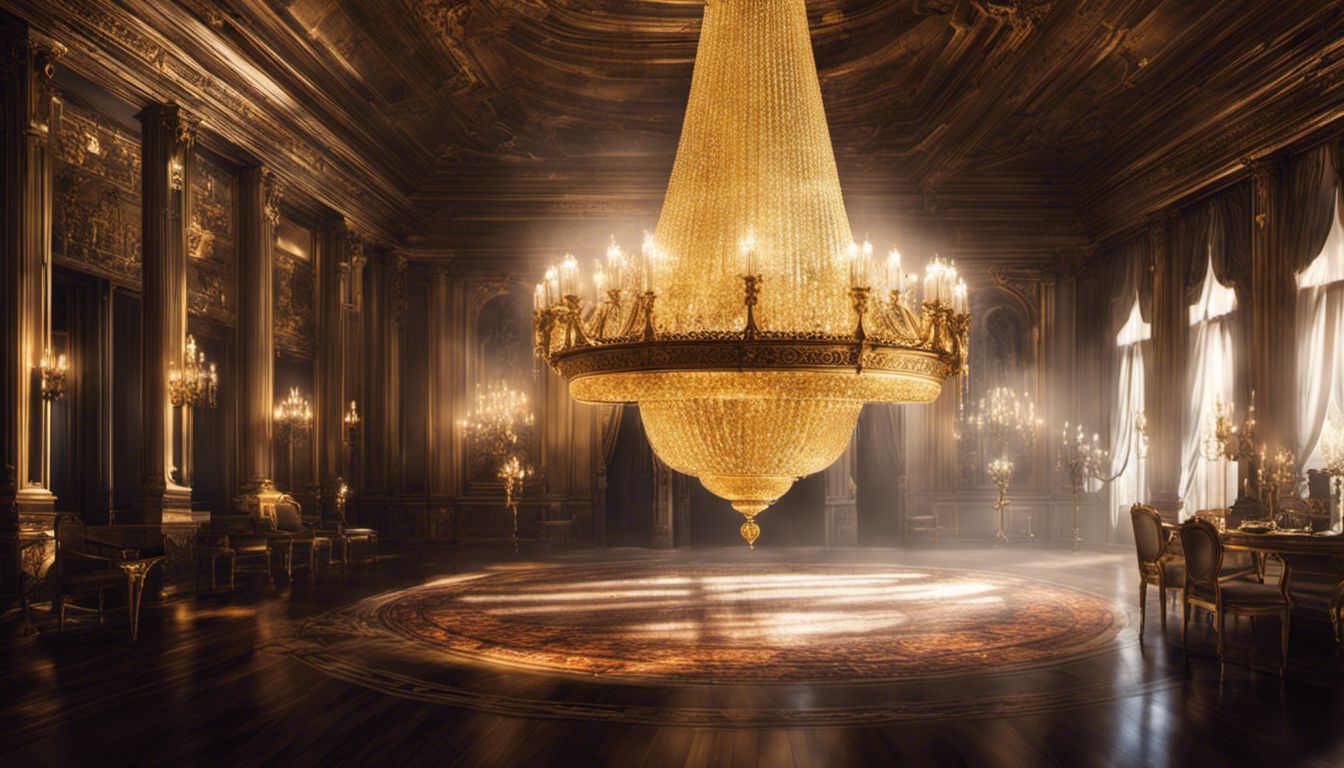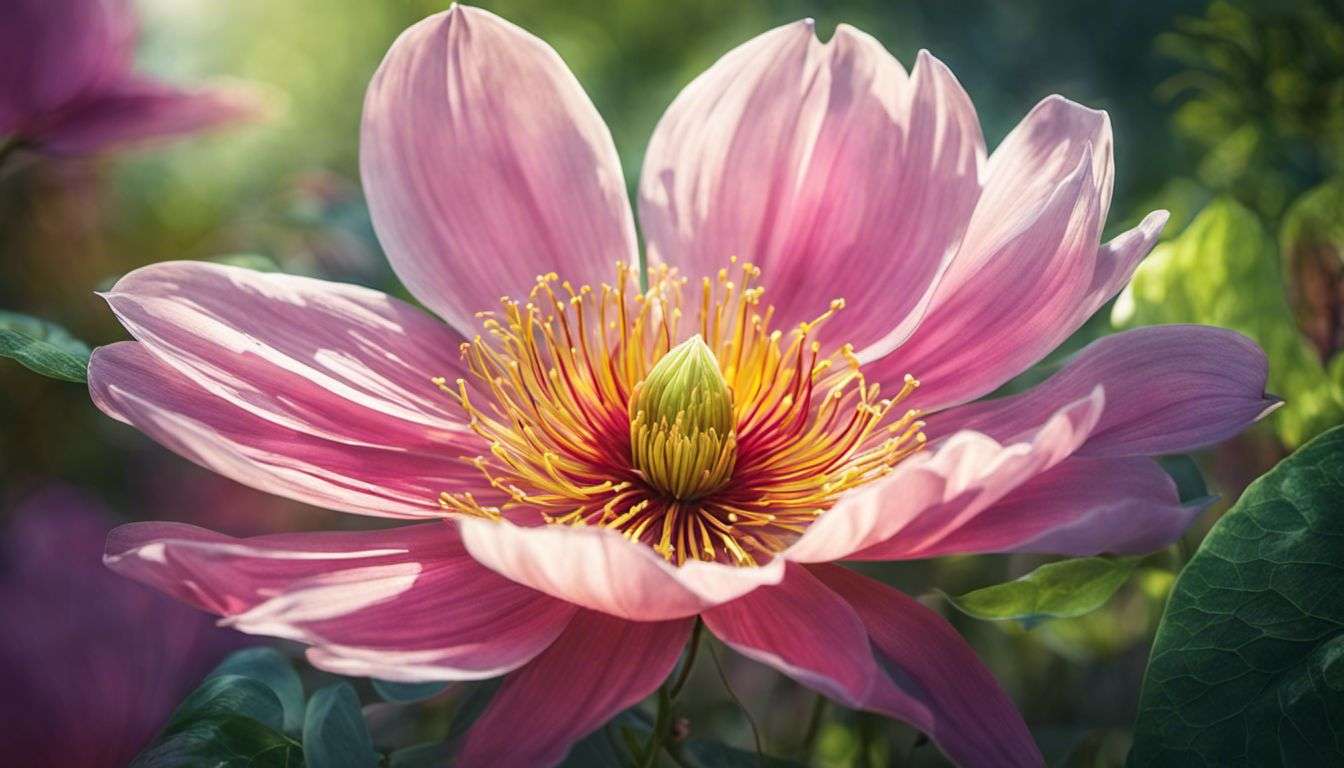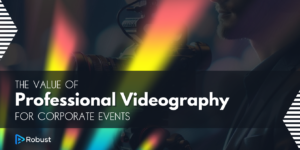Struggling to achieve the perfect lighting for your film or photography projects? You’re not alone. Lighting is an art form in itself and mastering it can dramatically improve your work.
In this guide, we’ll dive deep into various lighting techniques from basics to advanced levels, expanding your understanding of light’s essential role in creating a certain mood, ambiance, and depth in every shot.
Now let’s turn on the spotlight and start exploring!
Key Takeaways
- Lighting is a crucial element in film and photography, as it can dramatically improve the visual appeal and storytelling of your work.
- Understanding the three principles of light – direction, intensity, and softness/hardness – is essential for creating visually stunning images or footage.
- Key lighting techniques such as key lighting, fill lighting, backlighting, side lighting, and practical lighting play important roles in enhancing depth, dimensionality, and atmosphere.
- Advanced techniques like bounce lighting, soft lighting, hard lighting,
Basics of Film and Photography Lighting
 Understanding cinematic lighting is essential for achieving the desired visual effect in film and photography. By mastering the three principles of light – direction, intensity, and softness/hardness – photographers and cinematographers can create stunning visuals that enhance their storytelling.
Understanding cinematic lighting is essential for achieving the desired visual effect in film and photography. By mastering the three principles of light – direction, intensity, and softness/hardness – photographers and cinematographers can create stunning visuals that enhance their storytelling.
Understanding cinematic lighting
Filmmakers use cinematic lighting to tell stories in many ways. Skilled directors and cinematographers manipulate light and shadow to create depth, guide the viewer’s attention, set moods, or even convey emotions.
Cinematic lighting has several components that work together. These include key light (main source of light), fill light (softens shadows created by the key light) and back light (creates a 3D effect).
These combined elements influence how each shot looks on screen. The choices they make can drastically affect a film’s visual style and narrative mood. It’s quite thrilling how something as simple as lighting can carry such heavy storytelling weight!
The three principles of light (direction, intensity, and softness/hardness)
Let’s delve into the fundamentals of lighting in film and photography, beginning with the three principles of light: direction, intensity, and softness/hardness.
- Direction: Refers to where the light is coming from in relation to your subject. It can dramatically alter the mood and visual interest of a scene.
- Intensity: This principle relates to how bright or dim your light source is. Intensity influences exposure levels and contrasts in your shots.
- Softness/Hardness: This element defines how sharp or diffuse your light appears on screen. A hard light creates strong shadows and high contrast, while a soft light reduces shadow details and evens out contrasts.
Exploring Key Lighting Techniques in Videography

Videography adopts several key lighting techniques to enhance the visual appeal and narrative strength of a scene. In practice, light directs an audience’s attention and shapes their interpretation of the story.
Key lighting serves as the primary illumination source, setting a scene’s overall look while highlighting specific areas or characters.
Fill lighting counteracts harsh shadows that key lighting might generate by illuminating darker areas in a shot. Backlighting creates depth and separation between subjects and background elements, providing an airy glow around objects.
Sidelighting emphasizes contours and textures – it can create dramatic effects through bold contrasts between lit and shadowed areas. Lastly, practical light refers to visible light sources within the frame itself like lamps or candles; these add realism while contributing subtly to mood enhancement.
Key Lighting Techniques
The key lighting technique is essential in both film and photography as it provides the main source of light to illuminate the subject, creating depth and dimension.
Key lighting
Key lighting is a fundamental technique in film and photography that involves the primary source of light illuminating the subject or main focus of the shot. It provides depth, definition, and highlights to enhance visual interest and guide the viewer’s attention.
By strategically placing the key light at a specific angle relative to the subject, shadows are cast on one side, creating contrast and adding dimensionality. This technique helps set the mood and tone of a scene or photograph while emphasizing important details and elements within the frame.
Fill lighting
Fill lighting is an essential technique in film and photography that helps to balance the overall lighting of a scene. It is used to fill in shadows created by key lighting, ensuring that all areas are adequately illuminated.
Fill lighting reduces the contrast between light and shadow, resulting in a more balanced and evenly lit image. This technique can be achieved by using additional light sources such as reflectors or diffusers to bounce or diffuse light onto the subject, softening harsh shadows and creating a natural look.
By incorporating fill lighting into your lighting setup, you can enhance the overall quality of your images or footage by providing better visibility and detail in darker areas without overpowering the main light source.
Backlighting
Backlighting is a key lighting technique used in film and photography to create depth and separation between the subject and the background. By placing a light source behind the subject, it creates a halo-like effect around their edges, highlighting their shape and creating a sense of drama.
This technique can help add emphasis to the subject or create silhouettes for added visual impact. Backlighting can be achieved using natural sunlight or artificial lights, and it is often used in portrait photography or to enhance the atmosphere in cinematic scenes.
It adds an extra layer of dimensionality to visuals, making them more dynamic and captivating.
Side lighting
Side lighting is a technique that involves placing the light source to the side of your subject. This creates strong shadows and highlights, adding depth and dimension to your images or footage.
Side lighting can be used to enhance textures, create dramatic effects, or emphasize specific features. It is commonly employed in portrait photography or when shooting scenes with high contrast.
By positioning the light at an angle from the side, you can effectively sculpt your subject and bring out its unique characteristics. Experimenting with different angles and distances will allow you to achieve various moods and visual effects in your work.
Practical lighting
Practical lighting techniques are essential for achieving the desired look and feel in film and photography. These techniques involve using available light sources, such as lamps or natural sunlight, to create a specific atmosphere or highlight certain elements of a scene.
By carefully positioning these lights and adjusting their intensity, filmmakers and photographers can add depth, contrast, and dimension to their images. Practical lighting is versatile and can be used in various settings, from capturing everyday moments to creating dramatic effects.
With a good understanding of practical lighting techniques, professionals can effectively use the existing light sources around them to achieve stunning visual results.
Advanced Lighting Techniques
This section will cover bounce lighting, soft lighting, hard lighting, high key and low key lighting, motivated lighting, and ambient lighting.
Bounce lighting
Bounce lighting is a popular technique used in both film and photography to create softer, more diffused light. Instead of directly shining the light source on the subject, bounce lighting involves reflecting the light off a surface or object to achieve a gentle and flattering glow.
This technique helps to minimize harsh shadows and creates a more natural look. Bounce lighting can be achieved by using tools such as reflectors, white foam boards, or even walls and ceilings as reflective surfaces.
By bouncing the light off these surfaces, it scatters and spreads evenly onto the subject, resulting in a softer and more pleasing aesthetic.
Soft lighting
Soft lighting is a technique used in film and photography to create a gentle, diffused glow. It helps to minimize harsh shadows and creates a more subtle and flattering look. Soft lighting is achieved by using large light sources, such as softboxes or umbrellas, which scatter the light and produce a softer, more even illumination.
This type of lighting is often used in portrait photography to enhance the subject’s features and create a warm and inviting atmosphere. In film, soft lighting can be used to evoke emotions or create a dreamy effect.
It adds depth and dimension to scenes without overpowering the actors or objects being photographed. Soft lighting is an essential tool for photographers and filmmakers looking to capture beauty and emotion in their work.
Hard lighting
Hard lighting is a technique used in film and photography to create dramatic and intense visuals. It involves using a direct light source that produces sharp, well-defined shadows.
This type of lighting can add depth and contrast to your subject, making it stand out from the background. Hard lighting is often used in film noir or horror genres to create a sense of mystery or suspense.
By placing the light source at a steep angle, you can enhance textures and highlight facial features. Experimenting with hard lighting can add an edgy and dynamic look to your photos or videos, giving them a unique visual impact.
High key and low key lighting
High key and low key lighting are two distinct techniques used in film and photography to create contrasting moods. High key lighting involves bright, even illumination across the entire scene, with minimal shadows and a light color palette.
This technique is commonly used in cheerful or upbeat settings, such as romantic comedies or commercials. On the other hand, low key lighting creates a dramatic atmosphere by using strong contrasts between light and shadow.
It often features deep shadows, limited highlights, and darker tones. Low key lighting is frequently employed in suspenseful scenes or horror films to enhance tension and mystery. By carefully applying these techniques, filmmakers and photographers can effectively communicate emotions and visually enhance their storytelling.
Motivated lighting
Motivated lighting is a key technique in both film and photography. It involves using light sources that are already present in the scene to illuminate the subjects. This creates a more realistic and natural look, as if the light is coming from a practical source within the frame, such as a lamp or window.
By utilizing motivated lighting, filmmakers and photographers can enhance the authenticity of their visuals and create a stronger connection between viewers and the narrative or subject being portrayed.
This technique requires careful consideration of the location, time of day, and available light sources to ensure they align with the desired aesthetic and storytelling goals.
Ambient lighting
Ambient lighting is an essential technique in both film and photography that sets the overall mood of a scene. It refers to the general, low-intensity lighting that evenly illuminates a space, creating a sense of atmosphere and providing context for the subject.
By using ambient lighting, filmmakers and photographers can establish the time of day or create a specific ambiance, such as warm and cozy or cold and eerie. This type of lighting is often achieved by utilizing natural light sources or strategically placing artificial lights to mimic natural illumination.
Whether it’s capturing a hauntingly beautiful sunset or showcasing the bustling streets at night, ambient lighting adds depth and realism to visual storytelling.
Famous Directors and their Cinematic Lighting Styles
Explore the unique lighting styles of renowned directors like Arthur Edeson, Jordan Cronenweth, Emmanuel Lubezki, and Roger Deakins to gain insight into their impactful cinematic techniques.
Arthur Edeson (Casablanca)
Arthur Edeson was a renowned cinematographer known for his work on the classic film Casablanca. His lighting techniques in this film helped create the iconic noir atmosphere that has captivated audiences for decades.
Edeson used a combination of practical lighting and carefully placed key lights to highlight the emotions of the characters and enhance the drama of each scene. His use of shadows and contrasting light created depth and added visual interest to the film, making it an enduring masterpiece in cinematic history.
Jordan Cronenweth (Blade Runner)
Jordan Cronenweth, known for his work on the iconic film Blade Runner, is celebrated for his innovative and atmospheric lighting techniques. His masterful use of lighting helped to create the dark and gritty aesthetic that has become synonymous with the cyberpunk genre.
Cronenweth expertly balanced shadows and highlights to enhance the mood and atmosphere of each scene. With his unique approach to lighting, he showcased a visually stunning world where neon lights pierced through dense fog, creating a mesmerizing visual experience for audiences.
Emmanuel Lubezki (The Revenant)
Emmanuel Lubezki is known for his extraordinary use of lighting in “The Revenant.” With meticulous attention to detail, he creates a visually stunning atmosphere that enhances the raw and gritty nature of the film.
Lubezki expertly combines natural lighting with artificial sources to capture the harsh conditions and rugged landscapes. Through his innovative approach, he immerses viewers into the intense world of survival and adversity depicted in the movie.
The carefully crafted lighting techniques showcase Lubezki’s exceptional talent and contribute to the overall cinematic experience of “The Revenant.”.
Roger Deakins (Sicario)
Roger Deakins is a renowned cinematographer known for his exceptional work in films like “Sicario.” In this film, Deakins expertly uses lighting techniques to create tension and enhance the atmosphere.
He strategically employs deep shadows to heighten the suspense and evoke a sense of unease. The play of light and darkness amplifies the gritty realism of the story, showcasing Deakins’ mastery at capturing mood through lighting.
His use of contrasting colors further adds to the visceral impact, creating visually stunning scenes that immerse viewers into the world of “Sicario”.
How to Analyze Lighting in Film and Photography
Analyzing lighting in film and photography involves identifying lighting elements, understanding the general effect of lighting, and discussing it in a TEEL paragraph.
Identifying lighting elements
Identifying lighting elements is an essential skill for filmmakers and photographers. It allows them to understand how light impacts their subjects and helps create the desired mood and atmosphere. Here are the key elements to look for when analyzing lighting:
- Direction: Determine where the main source of light is coming from. Is it from above, below, or from the side? This helps create shadows and highlights, adding depth to the image.
- Intensity: Observe how bright or dim the light source is. Higher intensity lights produce harsher shadows, while lower intensity lights create softer, more diffused shadows.
- Color temperature: Take note of the color of the light. Warm colors (yellow, orange) create a cozy or intimate feel, while cool colors (blue, green) evoke a sense of serenity or mystery.
- Contrast: Assess the difference between the brightest and darkest areas in the frame. High contrast lighting creates strong shadows and distinct separation between light and shadowed areas.
- Quality: Evaluate whether the light is hard or soft. Hard lighting produces sharp shadows with well-defined edges, while soft lighting results in more gradual transitions between light and shadow.
Understanding the general effect of lighting
Lighting plays a crucial role in film and photography, as it sets the overall mood and tone of a scene. Different types of lighting can evoke various emotions and create specific atmospheres.
For example, soft lighting can add a romantic or dreamy feel, while hard lighting can create tension or drama. Lighting also helps to highlight certain elements within a frame, directing the viewer’s attention to important details.
By understanding how lighting affects the overall look and feel of an image or video, filmmakers and photographers can effectively convey their intended message to their audience.
Discussing in a TEEL paragraph
A TEEL paragraph is a structured way of organizing your thoughts and arguments in writing. TEEL stands for Topic sentence, Explanation, Evidence, and Link. The topic sentence introduces the main idea or point you want to discuss.
Then, you provide an explanation of that idea followed by evidence or examples to support it. Finally, you link back to the main argument or point you made in the topic sentence. Using this format can help make your writing clear and easy to follow for readers.
Example analysis
Analyzing lighting in film and photography allows us to better understand the impact it has on storytelling. By identifying the different lighting elements used, we can unravel how they contribute to the overall effect of a scene.
For example, in a TEEL paragraph analysis, we can discuss the technique used by renowned cinematographer Emmanuel Lubezki in the film “The Revenant.” The use of natural lighting throughout the movie creates a raw and rugged atmosphere that mirrors the harsh conditions faced by its characters.
This technique amplifies the intensity of their struggle and immerses viewers into their world. Lighting analysis helps us appreciate how different techniques shape our perception and enhance storytelling in both film and photography without overpowering or overshadowing other elements of visual composition.
Importance of lighting in storytelling
Lighting plays a crucial role in storytelling, whether it’s in film or photography. It sets the mood, enhances the atmosphere, and helps convey emotions to the audience. The strategic use of light can highlight key elements or characters in a scene and create visual depth.
By manipulating lighting techniques such as backlighting, side lighting, and fill lighting, filmmakers and photographers can guide the viewer’s attention to specific details or evoke specific feelings.
Additionally, different types of lighting can be used to depict different times of day or create unique visual effects. A well-executed lighting setup can elevate a story from ordinary to extraordinary by enhancing its visual impact and adding depth and meaning to the narrative.
Conclusion
In conclusion, this in-depth guide has explored various lighting techniques used in both film and photography. From understanding the basics of cinematic lighting to delving into key lighting techniques, we have learned about the importance of light direction, intensity, and softness/hardness.
We have also explored advanced techniques such as bounce lighting, soft and hard lighting, high key and low key lighting, motivated lighting, and ambient lighting. By analyzing the work of famous directors known for their unique cinematic styles, we can further grasp how storytelling is enhanced through effective use of light.
With this knowledge, you are now better equipped to create stunning visuals by mastering the art of film and photography lighting.
What Equipment Do I Need for Lighting Techniques in Film and Photography?
To master lighting techniques in film and photography, it’s crucial to have a comprehensive lighting equipment guide. The right gear can elevate your creative vision and ensure optimal results. Basic equipment includes lights (such as continuous or strobe lights), diffusers, reflectors, and light meters. More advanced options like gels, snoots, and softboxes offer greater control over lighting. Experimenting with various tools will help you shape your desired aesthetic.
What Are Some Advanced Lighting Techniques for Film and Photography?
Artificial lighting uses are crucial in achieving desired effects in film and photography. Key techniques include three-point lighting, where a key light highlights the subject, a fill light softens shadows, and a backlight adds depth. Other advanced methods involve using gels to modify light color or intensity, and employing techniques like Rembrandt lighting, low key lighting, or chiaroscuro for dramatic effects. Expertly manipulating artificial lighting can elevate the visual impact and storytelling in both mediums.
FAQs
1. What is the importance of lighting in film and photography?
Lighting is crucial in film and photography as it sets the mood, enhances visual appeal, and helps convey the desired message or story.
2. What are some common lighting techniques used in film and photography?
Some common lighting techniques used in film and photography include three-point lighting, high key lighting, low key lighting, backlighting, and fill light.
3. How can I achieve proper lighting for my photographs or films?
To achieve proper lighting, it’s important to consider factors such as the natural light source (e.g., sunlight), artificial lights (e.g., studio lights), placement of lights relative to subject, shadows, color temperature, and overall composition.
4. Can I use natural light instead of artificial lights for my photographs or films?
Yes! Natural light can be a great option for achieving beautiful results in your photographs or films. However, it’s important to understand how to work with natural light effectively by considering factors such as time of day, weather conditions, directionality of light source etc.
5. Are there any tips for creating dramatic effects using lighting techniques?
Yes! To create dramatic effects using lighting techniques:
– Experiment with different angles and positions of lights
– Use creative shadows to add depth
– Incorporate contrasting colors or gels on lights
– Play with intensity and directionality of light sources






